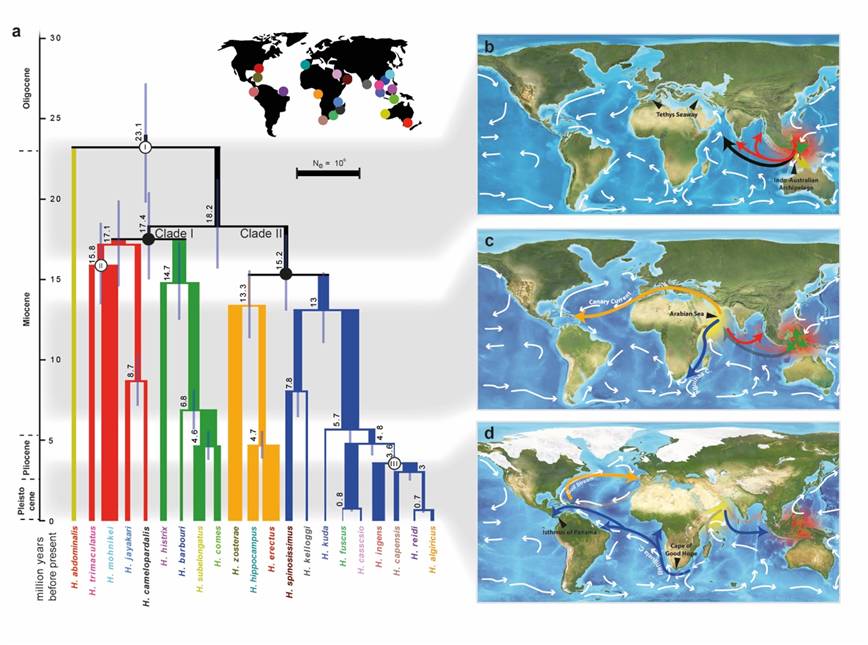Study Reveals Global Dispersal Routes and Convergent Genetic Adaptations in Seahorse Evolution
Diversification and phylogeography of marine organisms remain poorly understood. The radiation of seahorses (Family Syngnathidae) is a particularly iconic and suitable model system to investigate the effects that tectonic activity and ocean current dynamics can have on the dispersal and diversification of marine taxa due to the seahorses’ dispersal by rafting, as well as to study the rapid evolution of adaptive phenotypes in new environments due to the seahorses’ highest mutation rates among teleosts and greatest diversification rates within Syngnathidae.
Here, together with colleagues from 10 institutions from home and aboard, researchers led by Prof. LIN Qiang from the South China Sea Institute of Oceanology (SCSIO) , Chinese Academy of Sciences unveil the global dispersal routes and convergent genetic adaptations in seahorse evolution. This work was published in Nature Communications on 17 February 2021.
The researchers collected 358 specimens from 21 Hippocampus species with diverse global distribution patterns, representing the major lineages of the genus, and first demonstrate the substantial genetic differentiation between the North and South Atlantic Ocean biome (Figure 1).
Geographic diversification model based on species tree and divergence time reveals that the common ancestor of all seahorses originated in Indo-Australian Archipelago ~20-25 Ma (million years ago). Seahorses, despite their extremely sedentary life-style exhibited astonishingly, long-distance dispersal along routes aligned with ocean currents. In particular, seahorses colonized the Atlantic Ocean twice from the West Indian Ocean independently: one of them facilitated by the last opening of the East Tethys Seaway and the other by passing the Cape of Good Hope and, finally, the colonization of the East Pacific Ocean through the Panama seaway before its closure (Figure 2). Convergent evolution of adaptive traits, such as in the case of repeatedly evolved protective dermal spines suggests that developmental-genetic pathways were recruited several times independently and presumably in response to predation pressure.
In summary, both the unorthodox means of dispersal by rafting along oceanic currents and the ability to rapidly adapt to new environments and respond to changed selection regimes may account for the evolutionary success seahorses had while diversifying globally. This study thus provides new insights into the mechanism underlying evolutionary success of marine organisms while diversification
.

Figure 1 Genetic diversity and phylogenetic relationships of 358 seahorse specimens (Image by SCSIO)

Figure 2 Colonization and demographic history of seahorses (Image by SCSIO)
Contact
Dr. LIN Qiang
South China Sea Institute of Oceanology, Chinese Academy of Sciences
E-mail: linqiang@scsio.ac.cn
https://www.nature.com/articles/s41467-021-21379-x